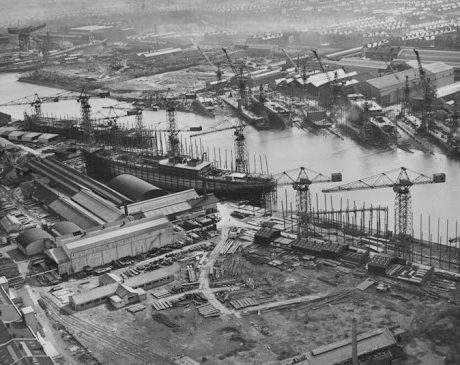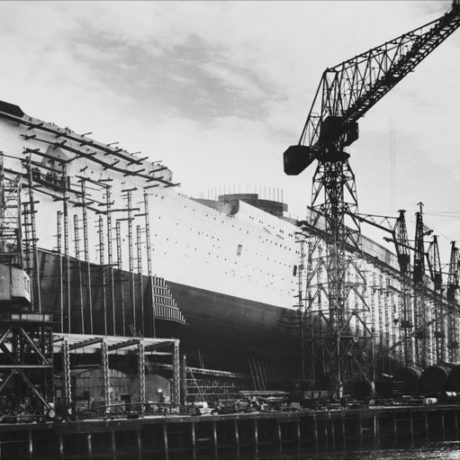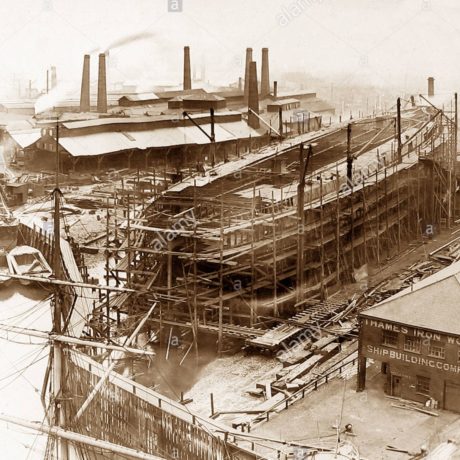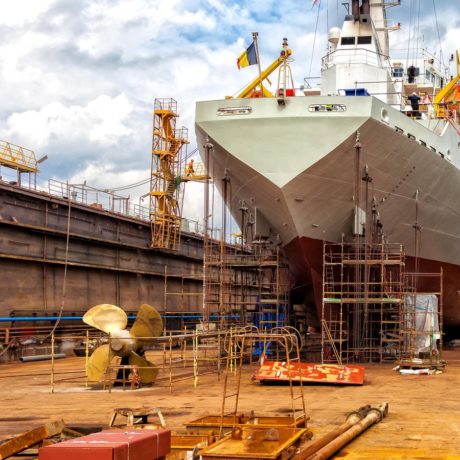History of Shipbuilding

Shipbuilding is one of mankind's oldest and most significant technologies. The ancestors of the aborigines could only have reached Australia, as they did 50,000 years ago, by making an voyage of over eighty kilometres in the open sea, which indicates not only that they could build seagoing craft, but that their techniques were sufficiently well-established and reliable to give them the confidence to undertake such a momentous journey.
On the Thames vessels must have been built from the very earliest days of human settlement, but the craft of shipwright does not enter the picture until much later.
It must be supposed that there were shipyards in and very near what is now the City of London, but it seems they moved out of the immediate area and down river in the 11th and 12th centuries. There are various reasons for this, but the most likely seem to be that they constituted a major fire hazard in a city of timber and thatch (compare how for this reason Venice made the glass makers move to the neighbouring island of Burano), and that it is much more profitable to carry merchandise across a river frontage than it is to build ships on the same land.
The earliest date the word shipwright appears in writing is 1297, but there are few records of the Thames shipbuilding industry before the 16th century, prosperous though it must have been.


Between 1512 and 1915 it reached its apogee, becoming the greatest shipbuilding area in the world. Its largest ship, at 27,000 tons displacement, was Brunel's GREAT EASTERN, launched in 1858. In those four centuries, some 5,000 ships were launched into the Thames from the Royal Dockyards at Deptford and Woolwich, and from the many private shipyards along its banks.

If you require more information on shipbuilding on the River Thames please click on this link to 'The Museum' located at Docklands.












